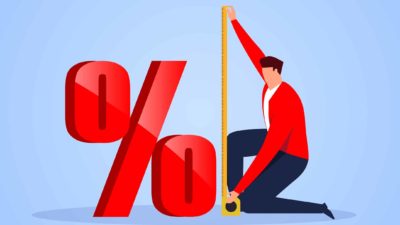In the shares vs. property contest last month, the S&P/ASX 200 Index (ASX: XJO) rose by 0.23% while the CoreLogic Australian home value index appreciated 0.6%.
The index measures the entire housing market, including houses, townhouses, and apartments.
If we break down the latest data from CoreLogic further, we see that the median Australian house price increased by 0.6% in February to $825,923. The median apartment price rose by 0.2% to $628,980.
CoreLogic research director Tim Lawless said property values were "more than resilient" amid high interest rates and cost-of-living pressures. The key driver of this resilience is a persistent imbalance between supply and demand, which Lawless says varies in size across the capital cities and regions.
Perth was once again the standout capital city last month with a very strong 1.8% rise in median home values. Next came Adelaide at 1.1% and Brisbane at 0.9%. Among the regional markets, South Australia was on top with 1.1% growth, followed by Western Australia and Queensland with 1% growth each.
Lawless said:
These regions are generally benefiting from a combination of comparatively lower housing prices and positive demographic factors that continue to support housing demand.
Melbourne pivoted from three months of negative growth to 0.1% growth in February. Sydney property values recorded a second month of price rises after booking subtle falls in November and December.
Lawless added:
Potentially we are seeing some early signs of a boost to housing confidence as inflation eases and expectations for a rate cut, or cuts, later this year firm up.
Shares vs. property price growth in February
Here is how shares vs. property performed in terms of price growth in the month of February.
| Property market | Median house price | Price growth in February | 12-month price growth |
| Sydney | $1,395,804 | 0.4% | 11.7% |
| Melbourne | $942,779 | 0.1% | 4.4% |
| Brisbane | $899,474 | 0.9% | 15.7% |
| Adelaide | $779,914 | 1% | 11.7% |
| Perth | $718,560 | 1.8% | 18.6% |
| Hobart | $698,508 | (0.1%) | (0.2%) |
| Darwin | $577,786 | 0.4% | (0.1%) |
| Canberra | $967,671 | 0.8% | 2.3% |
| Regional New South Wales | $747,146 | 0.4% | 3.6% |
| Regional Victoria | $601,659 | 0.1% | (0.8%) |
| Regional Queensland | $617,591 | 0.9% | 9.9% |
| Regional South Australia | $407,655 | 1.1% | 9.6% |
| Regional Western Australia | $494,655 | 1% | 10.8% |
| Regional Tasmania | $523,001 | 0.4% | (0.6%) |
| Regional Northern Territory | $460,599 | 2.1% | (2.1%) |
Source: CoreLogic
Top 5 risers of the ASX 200 in February
The S&P/ASX 200 Index (ASX: XJO) appreciated by 0.23% in February.
According to CommSec data, these ASX 200 shares below were the top risers of the month.
| ASX 200 share | Share price growth in February |
| Lovisa Holdings Ltd (ASX: LOV) | 40.9% |
| Altium Ltd (ASX: ALU) | 30.4% |
| WiseTech Global Ltd (ASX: WTC) | 29.4% |
| Reliance Worldwide Corporation Ltd (ASX: RWC) | 29.3% |
| CSR Ltd (ASX: CSR) | 27.23% |
Source: CommSec
The February earnings season produced winners and losers, and most of the top 5 ASX 200 shares rose due to outstanding financial reports.
Budget fashion jewellery chain Lovisa soared following the company's strong 1H FY24 report.
Despite today's cost-of-living crisis, Lovisa delivered an 18.2% increase in revenue to $373 million and a 12% bump in net profit after tax (NPAT) to $53.5 million.
Lovisa shares will pay an interim dividend of 50 cents per share with 30% franking.
That's a more than 30% increase on the 1H FY23 dividend of 38 cents.









